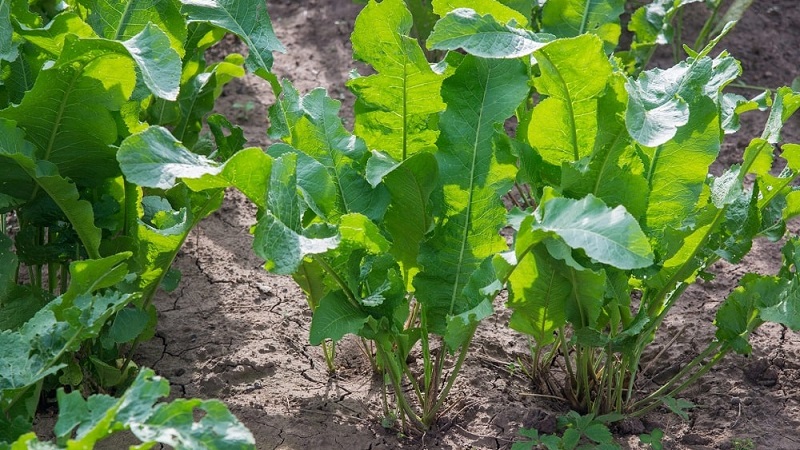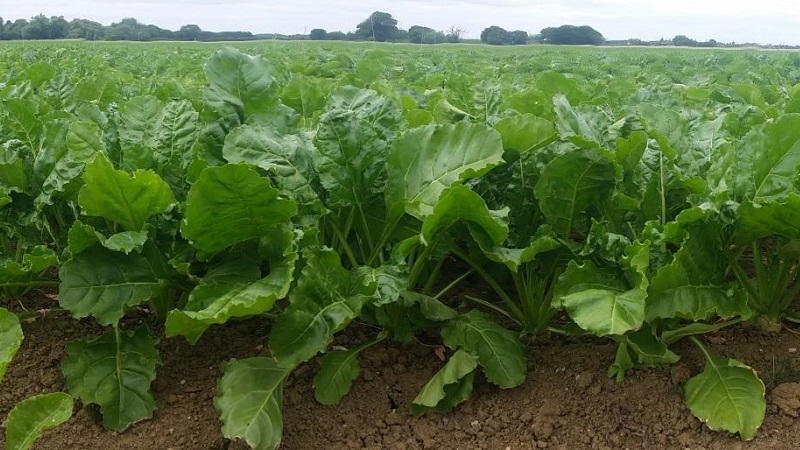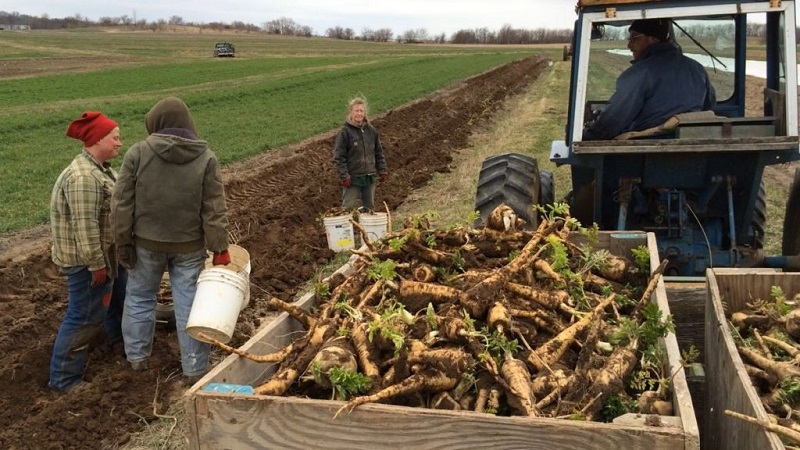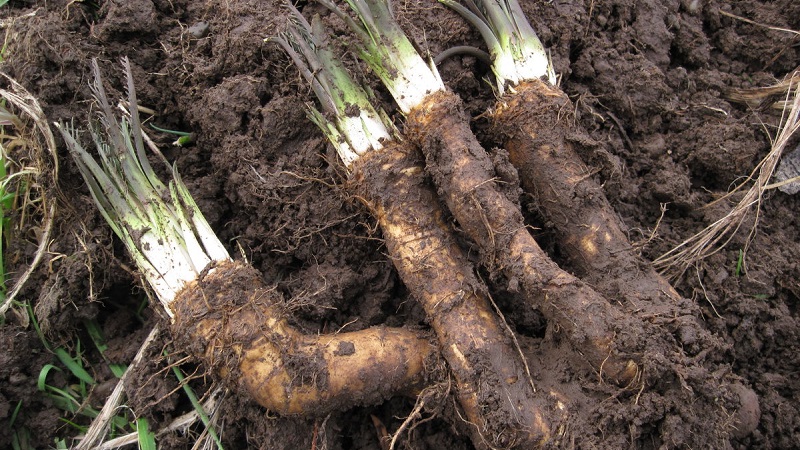Is horseradish cultivation profitable as a business and what are the features of its agricultural technology on an industrial scale
Horseradish is traditionally used in Russian cuisine, giving jellied meat or okroshka a unique taste and pleasant spiciness. Wasabi, which we associate with sushi and rolls, is also a kind of horseradish. The useful plant is successfully used in folk and official medicine and even to obtain rocket fuel.
From the article you will learn how to grow a hectare horseradish and organize a business.
The content of the article
Is it worth growing horseradish as a business
Information about the profitability or unprofitability of such a business is very contradictory. The material was prepared after studying a significant amount of information, based on existing knowledge and personal life experience.
Advantages and disadvantages
Business benefits include:
 lack of competition in the domestic market;
lack of competition in the domestic market;- low cost, small initial investment;
- insignificant human participation in the production of a product;
- fast return on investment;
- simple agrotechnics of cultivation.
Of the minuses, there are:
- the need to search for sales markets;
- lack of business knowledge.
Profitability
Profitability refers to the efficient use of resources (money, fixed assets, personnel). The indicator is measured in monetary terms.
The return on sales in the first year can be over 60%... From 1 hectare of horseradish crops at the end of the season, we get a profit of 299,000 rubles. with a sales volume of 480,000 rubles.
Calculating efficiency, we divide the financial result by the revenue and multiply it by 100%:
299,000: 480,000 x 100% = 62.29%.
Where to begin
It is necessary to evaluate the idea in relation to your capabilities, abilities, natural conditions, specific circumstances of place and time. Studying materials on the topic (reading articles, watching videos) about the specifics of the business and the peculiarities of growing a culture, consulting with experts should help in creating a holistic picture of your prospects.
Required capital
Costs prior to planting the vegetable include:
- acquisition of a land plot;
- purchase of tools, equipment, seeds;
- soil preparation: cleaning, plowing, harrowing;
- fertilization;
- hiring workers.
After planting horseradish, costs will be required:
- crop processing, care;
- harvesting.

In different regions, the cost of land for acquisition of ownership or lease varies, so it makes sense to calculate the cost of purchasing it yourself. Here are the approximate costs of purchasing seed material, carrying out preparatory and maintenance work:
- The purchase of planting material per hectare will cost 90,000 rubles.
- Preparing the soil for planting will require 30,000 rubles. per 1 hectare. This includes the cost of plowing, harrowing.
- The application of mineral fertilizers per hectare of sown area will cost 16,000 rubles.
- Crop care (watering) and harvesting will require at least 45,000 rubles. per hectare.
Business plan
When drawing up a business plan for the project, we include:
- product description;
- market analysis;
- characteristics of potential buyers;
- production plan and cost calculation;
- promotion plan;
- organizational and financial plans.
Total investment consists of acquisition costs land, agricultural machinery, fertilizers, insecticides, wages, and transportation costs.
There are no monopolists in the production of vegetables in Russia, the demand for horseradish root is much higher than the supply in our market. therefore business on horseradish growing will not have significant competition.
What is needed to implement the idea
To start the production of crops on an industrial scale, you need to decide on the design of your business... It can be carried out by an individual entrepreneur, a limited liability company or a farm. The authorized capital of the LLC is divided into shares.
Important! The members of the company are not liable with all their property for its obligations. The risk of their losses in connection with the activities of the company is within the value of the shares in the authorized capital.
Business registration is carried out at the tax office at the place of residence... Registration period - 3 days from the date of submission of documents.
Variety selection
The most famous and common varieties:
- Atlant,
- Tolpukhovsky,
- Valkovsky.
They are more suitable for industrial cultivation than others, since they are drought-resistant, hardy, less susceptible to diseases and pests.

A variety that is mainly grown in Russia - Atlant... Its roots are white with a gray tint. The rhizome has a bumpy surface with small peripheral roots. Length - from 20 to 50 cm, diameter - up to 5 cm. The period from the moment of planting to the beginning of the death of the leaves is about 130 days. The variety is mid-season, has good keeping quality.
How to grow horseradish on an industrial scale
Chernozem or loamy soil is most suitable for horseradish cultivation.... When grown on light soils, the sharpness in the taste of horseradish is lost. Optimal soil acidity is pH 6.0-6.5.
Before planting, the soil is plowed (dug up) and harrowed. When growing on a large area, there is not enough small inventory in the form of shovels, rakes and a walk-behind tractor. You will need a tractor, additional plow, harrow, cultivator. An irrigation system is purchased (manufactured) for irrigation.
To get a good harvest, the soil is fertilized before planting. Both organic fertilizing and complex mineral fertilizing, including nitrogen, potassium, phosphorus, are suitable.
Choose cuttings of rhizomes with a diameter of about 1 cm, a length of 20 cm... They are planted by hand in wells at an inclination of 30 °.
Landing in progress into moist soil. The optimum distance between rows is 70 cm, between cuttings - 35-40 cm. The best time for planting is April.
Light-loving plant... Crop care consists in weeding, watering during dry periods. It is also recommended to remove flower shoots and lateral roots to obtain a large root.
Rooting takes place in late October - early November... After cleaning and sorting, the dug roots are placed in boxes and stored in rooms with low temperatures... Under normal conditions, the roots dry out quickly, wrinkle and lose their presentation.
Collection leaves for canning best produced in August - September.
For reference. According to vegetable growers, it is enough to plant horseradish once - the plant grows quickly.
Possible problems and mistakes to avoid
If you correctly calculate the organization of the business and observe the technology of growing crops, there should not be any big difficulties.
The acquisition of harvesting equipment may be problematic... When growing horseradish on a large area, it is unreasonable to harvest it only by hand, although the share of such labor is large (cleaning, pruning, sorting).
The only farmer who grows horseradish on an industrial scale in Russia removes the rhizomes with a special harvester made to order in Switzerland. The working principle of this machine is the same as that of potato harvester... The soil is loosened in rows at a certain depth, due to which the roots are on the surface of the earth.

Productivity from 1 hectare
On 1 hectare of land, you can grow from 4 to 6 thousand horseradish bushes... With such a number of plants, when harvesting, it is possible to get about 20,000 kg of root.
Commercial quality has 60% rhizomes... The remaining 40% are used as planting material, sold for planting, processed into powder or made their own products.
Sales of products
The sales market in Russia is large, but not studied... A huge number of horseradish roots are imported into the country from China. The only large vegetable producer in Russia is a farmer from the Tula region A.V. Tarabrin. According to experts, horseradish root imported from abroad is less valuable, and table horseradish produced in Russia is partly composed of powder made from dried root. Given these circumstances, we can conclude that a vegetable grown in Russia will be in great demand.
Possible sales options:
- Sale to processing companies.
- Delivery to catering points and chain stores.
- Implementation in the pharmaceutical industry.
- Sale for the needs of the defense industry.
- Market implementation.
Competition
Needless to say about competition when there is only one large crop producer in the whole country... Growing horseradish as a business will allow an entrepreneur to generate significant income.
How much can you earn this way
The larger the land plot, the greater the profit from it... Of course, subject to production technology, including timely fertilization. The experience of the farmer Tarabrin speaks of the prospects of the business in the conditions of central Russia.

Example of calculating profit
Expenses 90,000 rubles were spent on the purchase of planting material. The processing of the site cost 30,000 rubles, fertilization - 16,000 rubles. Crop care and harvesting required 45,000 rubles.
We expect to receive from 1 hectare 20,000 kg of horseradish root. 60% of the resulting vegetable will be 12,000 kg. The root is sold at a price of 40 rubles. for 1 kg. From the sale will be received 480,000 rubles.
Summing up costs: 90 000 + 30 000 + 16 000 + 45 000 = 181 000.
Finding the difference between the amount received and the costs: 480 000 – 181 000 = 299 000... According to the most general estimates, the profit will be 299,000 rubles.
Reference. Calculations were made in case of lack of own equipment, production of work with a hired tractor.
Conclusion
Should you start a shitty business? The answer is definitely positive. The return on investment in the first year of operation testifies to the prospects of the business and its profitability. By starting a business now, you can take your niche in the vegetable production market and succeed.